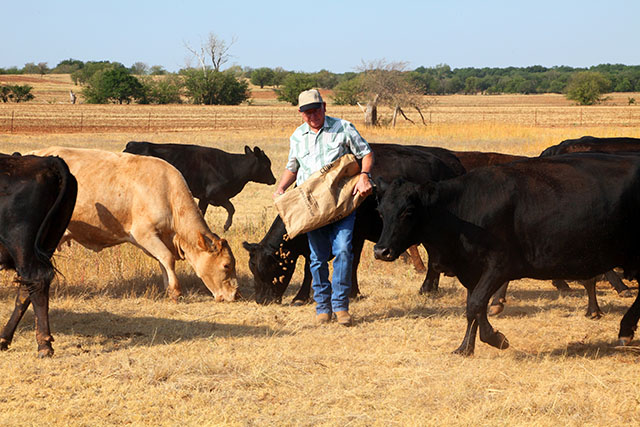USDA to Provide Payments to Livestock Producers Impacted by Drought, Wildfires
Aug 20, 2025

The United States Department of Agriculture announced it will help livestock producers who were affected by drought of wildfires in 2023 and 2024.
Tennessee was heavily affected by a drought throughout the state in 2024. This time last year the bulk of the state was in a long-term drought, according to the U.S. Drought Monitor. Some parts were even in a severe drought.
The federal agency said it would use Livestock Forage Disaster Program money to streamline payments for producers across the country, including those in Tennessee. This will come in the form of the Emergency Livestock Relief Program.
How you can tap into those funds
ELRP payment eligibility requires livestock producers to have suffered grazing losses in a county rated by the U.S. Drought Monitor as having a D2 (severe drought) for eight consecutive weeks or a D3 (extreme drought) or higher level of drought intensity during 2023, 2024 or both calendar years, and have applied and been approved for LFP.
Additionally, producers whose permitted grazing on federally managed lands was reduced due to wildfire are also eligible for ELRP, if they applied and were approved for LFP in 2023, 2024 or both calendar years.
To streamline and simplify the delivery of ELRP benefits, producers are not required to submit an application for payment; however, they must have the following forms on file with FSA:
• CCC-853, Livestock Forage Disaster Program Application
• Form AD-2047, Customer Data Worksheet.
• Form CCC-902, Farm Operating Plan for an individual or legal entity.
• Form CCC-901, Member Information for Legal Entities (if applicable).
• Form FSA-510, Request for an Exception to the $125,000 Payment Limitation
for Certain Programs (if applicable). This form is required to be on file for both
2023 and 2024 to be eligible for the payment limitation exception.
• SF-3881, Direct Deposit.
• AD-1026, Highly Erodible Land Conservation (HELC) and Wetland
Conservation (WC) Certification.
Most producers, especially those who have previously participated in FSA programs, likely have these forms on file. However, those who are uncertain and want to confirm the status of their forms, can contact their local Farm Service Agency county office.
Tennessee was heavily affected by a drought throughout the state in 2024. This time last year the bulk of the state was in a long-term drought, according to the U.S. Drought Monitor. Some parts were even in a severe drought.
The federal agency said it would use Livestock Forage Disaster Program money to streamline payments for producers across the country, including those in Tennessee. This will come in the form of the Emergency Livestock Relief Program.
How you can tap into those funds
ELRP payment eligibility requires livestock producers to have suffered grazing losses in a county rated by the U.S. Drought Monitor as having a D2 (severe drought) for eight consecutive weeks or a D3 (extreme drought) or higher level of drought intensity during 2023, 2024 or both calendar years, and have applied and been approved for LFP.
Additionally, producers whose permitted grazing on federally managed lands was reduced due to wildfire are also eligible for ELRP, if they applied and were approved for LFP in 2023, 2024 or both calendar years.
To streamline and simplify the delivery of ELRP benefits, producers are not required to submit an application for payment; however, they must have the following forms on file with FSA:
• CCC-853, Livestock Forage Disaster Program Application
• Form AD-2047, Customer Data Worksheet.
• Form CCC-902, Farm Operating Plan for an individual or legal entity.
• Form CCC-901, Member Information for Legal Entities (if applicable).
• Form FSA-510, Request for an Exception to the $125,000 Payment Limitation
for Certain Programs (if applicable). This form is required to be on file for both
2023 and 2024 to be eligible for the payment limitation exception.
• SF-3881, Direct Deposit.
• AD-1026, Highly Erodible Land Conservation (HELC) and Wetland
Conservation (WC) Certification.
Most producers, especially those who have previously participated in FSA programs, likely have these forms on file. However, those who are uncertain and want to confirm the status of their forms, can contact their local Farm Service Agency county office.